HUMAN'S MEMORY - FORGETTING
Now I am going to tell something new, that is human's memory.
Let's be start ---
------ * HUMAN'S MEMORY * ------
Memory is one of the most fascinating topics you can ever hope to study in any field.It is a fundamental component of daily life.
Memory is the way we record the events of our lives and also the information and skills we glean from these events.
The term memory is a blanket label for a large number of processes that work together to create a bridge between our past and our presents.
♦ Types of Memory ,There are 3 types of memory:
- Sensory Memory:
Sensory Memory - The shortest-term memory. - Has the ability to retain impressions of sensory information after the original stimuli have ended. Stimuli received through the five senses of (sight, hearing, smell, taste and touch) which are retained accurately but very briefly.
A Sensory Storage - the immediate, initial recording of sensory information.
Here information is preserved for a very brief time (usually only a fraction of a second) in its original form.
The name "sensory storage" implies that something perceptual occurs. In fact, what enters into sensory storage are images (in the case of vision), after images. Although the actual stimulus may have disappeared, we may still perceive it for a second or so.
The actual length of time an image exists in sensory storage depends on the modality:
1)Iconic memory - a visual image in sensory storage. Although most people seem to believe that visual images last longer (this is based on intuition, not science), they do not - they last approximately 1/4 of a second.
Echoic memory - auditory image. These (as well as other senses) seem to last up to 3 seconds.
SO, we can see that within sensory storage we have 2 distinct stores - an iconic and echoic.
Once one of these types of memories occur, we have some raw data that will be lost if we do not engage in one of two processes (these two processes are required to get information from sensory memory to short term memory).
2)Pattern recognition - when new information comes into sensory storage, we actively search through long term memory in an effort to find a match for this new raw data.
3)Attention - this is pretty obvious. The more we pay attention to a stimulus, the more likely it will continue onto the next memory store (short term memory)
Once we have successfully recognized or attended to the information, we are able to bring the information into SHORT-TERM MEMORY
- Short-Term Memory:(STM)
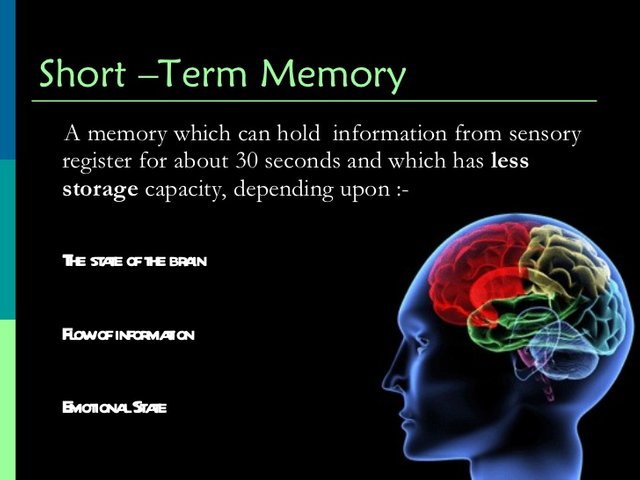
Short-Term Memory - Acts as a kind of “scratch-pad” for temporary recall of the information which is being processed at any point in time, and has been referred to as "the brain’s Post-it note”. Can be thought of as the ability to remember and process information at the same time. - It holds a small amount of information (typically around 7 items or even less) in mind in an active, readily-available state for a short period of time (typically from 10 to 15 seconds, or sometimes up to a minute).
Short-Term Memory - a limited capacity store that can maintain information for approximately 20 seconds.
It is possible to extend duration of Short-Term Memory (to approximately 30 seconds) by engaging in a process called Maintenance Rehearsal.
a) Maintenance Rehearsal - the process of repeatedly verbalizing or thinking about the information.
For example - Late at night, you have been out partying all night, you get back home and you are hungry. you decide. It's time for pizza. So you pick up the phone and call information to get the number of a local pizza delivery place. When the operator gives the number, you say the number over and over so that you don't forget it in the time it takes to hang up and dial the number. This process of repeating the number over and over is actually maintenance rehearsal. It won't help get the information into long term memory, but it will help keep it in short term memory a little longer.
b) Slots - Short-Term Memory seems to be divided into "slots" - to be precise, Short-Term Memory has 7 slots, each one capable of holding one piece of information.
But, we are bombarded with so much information all the time that Short-Term Memory can become cluttered. In order to prevent the clutter from become too much, Short-Term Memory pushes some information out in order to make room for other information. But what gets pushed out???
c) Primacy and Recency
--- Primacy - when you are receiving information, the information perceived first is more likely to be remembered. This more recent information may simply get to long term memory more easily, and thus be remembered or we may just rehearse the early information more.
--- Recency - information perceived toward the end of an event is also more likely to be remembered. So, information in the "middle" seems to get pushed out and is less likely to be remembered.
While maintenance rehearsal will help keep information in Short-Term Memory, the only way to bring information into long-term memory is through ELABORATE REHEARSAL.
d) Elaborate Rehearsal - connecting new information with previously stored, already existing associative structures.
For Example - When our sixth grade teachers used to make us put a vocabulary word into context in a sentence - this combines the new information (the vocabulary word) with an associative structure (the sentence).
"Johnny, the word is pimple. Can you use pimple in a sentence?" "Yes. My head is so full of all of this Psychological information, I think it is going to pop like a big, white, pimple"
- Long-Term Memory:(LTM)
Long-Term Memory - Intended for storage of information over a long period of time. - Actually decays very little over time, and can store a seemingly unlimited amount of information almost indefinitely. Encode to some extent by sound.
Long Term Memory an unlimited capacity store that can hold information over lengthy periods of time.
♦there are 3 categories (or subcategories) of Long-Term Memory:
a) Procedural memory - this is the most basic type of long term memory (very simplistic) and primarily involves memories of rudimentary procedures and behaviors.
For example - procedural memories include our memory for eating, sitting in a chair, etc. As you can see, these are are based on behavior.
some even suggest that there is an additional, basic category called DECLARATIVE memory - just factual information like names and dates.
b) Semantic memory - mental models of the environment as well as procedures.
For example - knowledge of word meanings, language, strategies for problem solving, factual information (like laws), etc.
c) Episodic memory - information about events, people, places, etc., that include an autobiographical aspect as well as a time and place.
For example - "I saw a bear last night in my back yard."
Now that we have seen how memory works, let's look at how or why memory may NOT work.
According to this model information must pass through two temporary storage before it can be placed into more permanent storage, and then retrieved for later use. Take a look at the model BELOW to get an overview of the whole process, and then move on with the notes.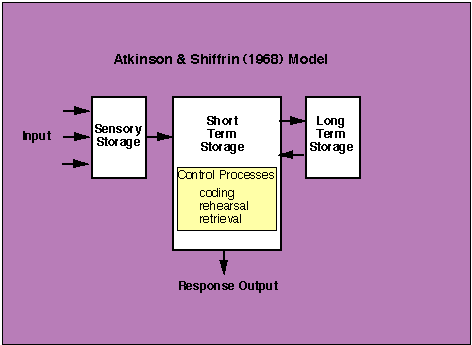
INPUT Sensory Memory Short – Term Memory Long – Term Memory OUTPUT rehearsal retrievalencoding attention by the ABOVE model
Different types of Long-Term Memory 4 main types of long-term memory:
♦ Explicit Memory
♦ Episodic Memory
♦ Semantic Memory
♦ Implicit Memory.
Explicit Memory (Declarative Memory) (“knowing what”) is memory of facts and events, and refers to those memories that can be consciously recalled. it consists of information that is explicitly stored and retrieved, although it is more properly a subset of explicit memory. can be further sub-divided into episodic memory and semantic memory.
Episodic memory Represents our memory of experiences and specific events in time in a serial form, from which we can reconstruct the actual events that took place at any given point in our lives. It is the memory of autobiographical events (times, places, associated emotions and other contextual knowledge) that can be explicitly stated.
Semantic Memory is a more structured record of facts, meanings, concepts and knowledge about the external world that we have acquired. refers to general factual knowledge, shared with others and independent of personal experience and of the spatial/temporal context in which it was acquired.
*Implicit Memory (Procedural Memory) (“knowing how”) is the unconscious memory of skills and how to do things, particularly the use of objects or movements of the body. It is composed of automatic sensor motor behaviors that are so deeply embedded that we are no longer aware of them and once learned, these "body memories" allow us to carry out ordinary motor actions automatically. Previous experiences aid in the performance of a task without explicit and conscious awareness of these previous experiences.
- Encoding and Retrieval Encoding and retrieval are intricately linked to memory. They refer to the processes of moving information to and from short-term memory (Short-Term Memory) and long-term memory (Long – Term Memory), respectively.
INPUT Sensory Memory -Short – Term Memory- Long – Term Memory -OUTPUT rehearsal retrieval encoding attention
The longer the time, the more the memory trace decays and as a consequence more information is forgotten. Displacement-when Short-Term Memory is 'full', new information displaces or 'pushes out’ old information and takes its place.
Interference-It was assumed that memory can be disrupted or interfered with by what we have previously learned or by what we will learn in the future.
Two ways in which interference can cause forgetting
♦Retroactive interference occurs when new information interferes with the retrieval process of information in Long – Term Memory
♦Proactive interference occurs when information in Long – Term Memory interferes with the ability to recall newly learned information.![]()
Retrieval failure - information may be available but temporarily inaccessible. Retrieval cause can be: External - in the environment, e.g. smell, place etc. Internal- inside of us, e.g. physical, emotional, mood, drunk etc.
This is all for now, Thank you guys for your visit.
Feel free to post your comments.
Have a nice day, tillnext time see you @rajat7254.
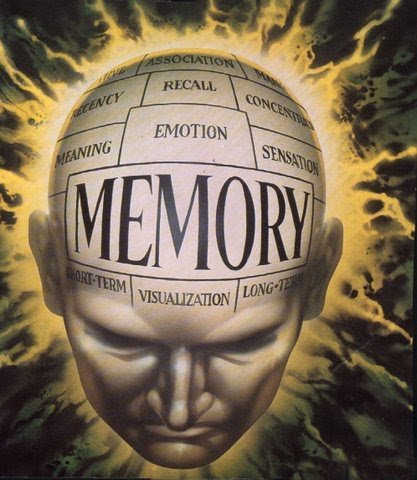
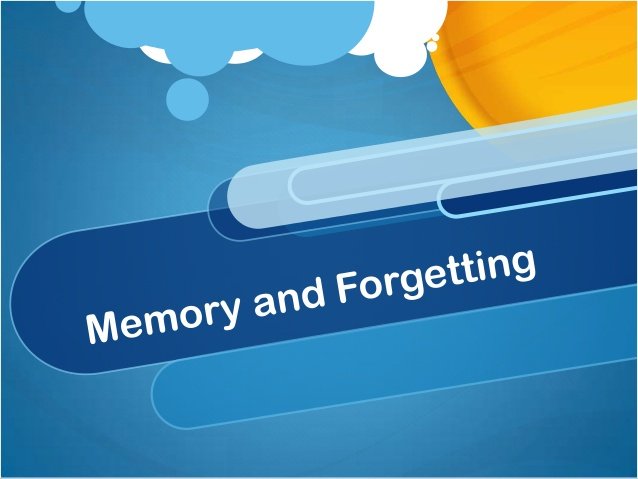
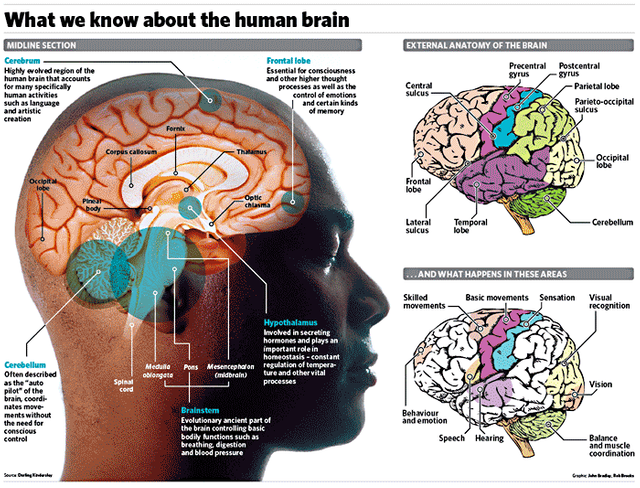
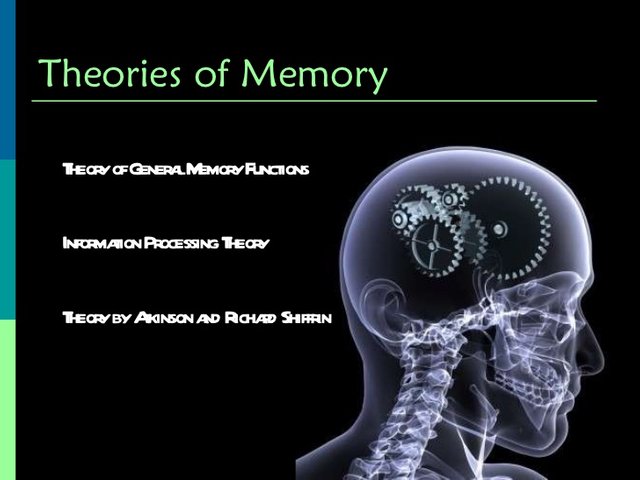
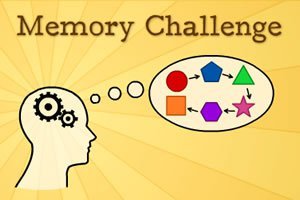
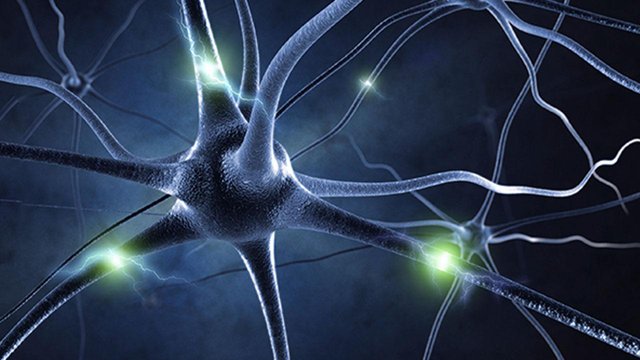
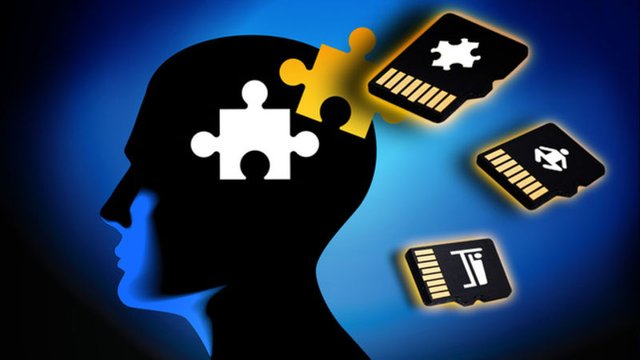

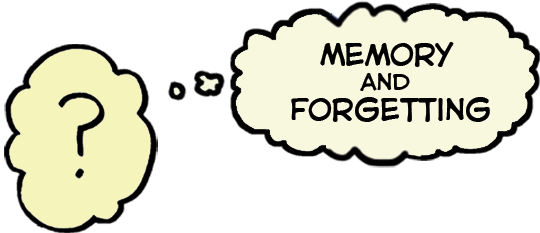


You got a 21.88% upvote from @sunrawhale courtesy of @rajat7254!
This service has been created with the help of @yabapmatt so please show your support by voting for him for witness!
Hi Rajat
you have nicely covered most part of the memory section as there are
more to explore inside the human mind good post dear I think you are
going to become next Albert Einstein in the coming years
Thanks for sharing it here I will read it many times so that I can make my
mind more sharp due to mobile and electronic gadges our memory has fall down
Thanks @rajat7254
@maujmasti
Nice. Keep it up good work
wow, thats a lot of information about human brain , i like it ....keep up the good work.....;-)
@adityajainxds
you seem to be getting better day by day...Nice work..
You got a 5.42% upvote from @upmewhale courtesy of @rajat7254!
Earn 100% earning payout by delegating SP to @upmewhale. Visit http://www.upmewhale.com for details!